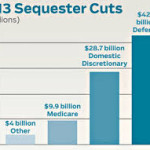
Re-admissions – Is Telehealth the Answer?
Summary: Hospital readmissions are of major concern and account for a large portion of preventable healthcare costs. Is telehealth the answer or at least a
Home » Health Care Reform » Page 8

Summary: Hospital readmissions are of major concern and account for a large portion of preventable healthcare costs. Is telehealth the answer or at least a

The Affordable Care Act (ACA) is a common term referring to the Patient Protection and Affordable Care Act (PPACA) of 2010. Other terms used
are Healthcare Reform and Obamacare.

If you’re interested in learning more about Health Exchange Subsidies, visit our Insights page to stay up to date on this and many more healthcare

What is Medicaid? How is it funded? How does Medicaid compare to healthcare expenses? Medicaid in Comparison to Healthcare Expenditures Medicaid, a joint federal and


Summary: What does sequestration mean? What organizations are affected by the sequestration? What does sequestration mean? The official definition in terms of the budget is
Summary: What does sequestration mean? What organizations are affected by the sequestration? What Organizations Are Affected By The Sequestration? What does it mean? The

Summary: Which organizations are exempt from the sequestration? What does it mean? The official definition in terms of the budget is a US legal procedure

What does sequestration mean? How did it come about? The official definition in terms of the budget is a US legal procedure in which automatic spending cuts are triggered.